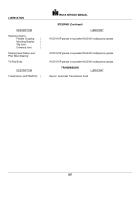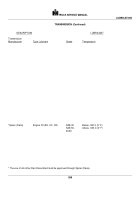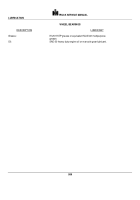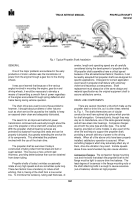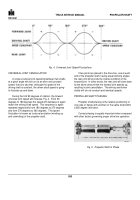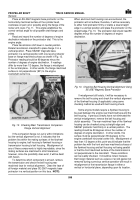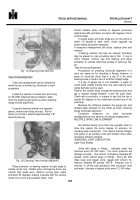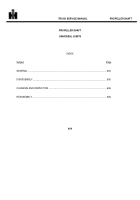TM-5-3805-254-14-P-2 - Page 604 of 894
TRUCK SERVICE MANUAL
PROPELLER SHAFT
General
Loose engine and main transmission to frame
mountings will not affect vertical or horizontal alignment
of the main transmission companion flange with respect
to the flange being 90 degrees to the engine crankshaft
center line.
However, any change from the originally
mounted position caused by loose mountings or
otherwise, will result in the remaining drive line flanges
working at a different angle, which is not permissible.
Therefore, before checking the drive line companion
flange angles, be certain that engine and transmission
mountings are in good condition and are tight.
Propeller shaft alignment checking procedures given
herein will apply to front as well as rear axle drive lines.
The vertical alignment angle of all companion flanges,
whether on the front axle or rear axle drive line, is 90
degrees from a true horizontal minus the number of
degrees of engine declination (engine angle ).
Main Transmission Companion Flange Run-Out
Because the angularity of the complete drive line
must match with the main transmission companion
flange, the flange itself must turn perfectly true, and its
exact vertical angle must be known.
To check for run-out of the main transmission flange,
securely mount a dial indicator to the transmission rear
face.
Position indicator stylus on the flange machined
surface and rotate flange one complete revolution, Fig.
10.
Flange run-out must not exceed .005".
If run-out is
excessive, it may be eliminated by rotating the flange on
the spline.
If excessive run-out still exists, flange is
distorted and must be replaced.
Back to Top

